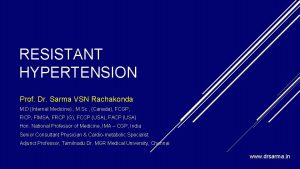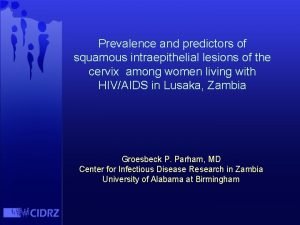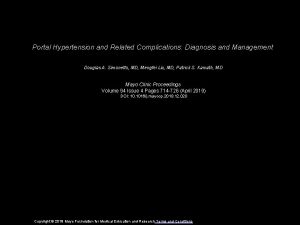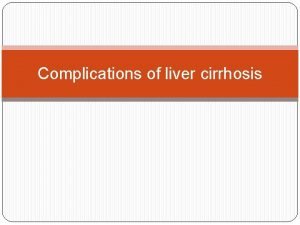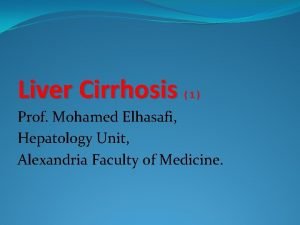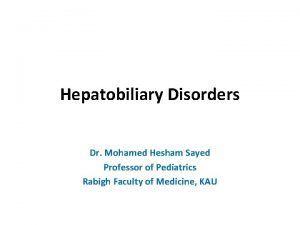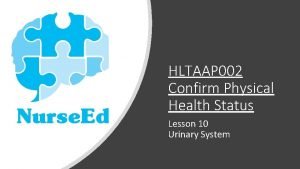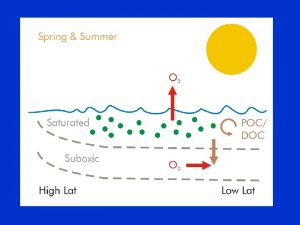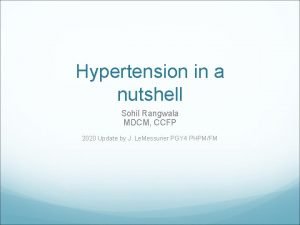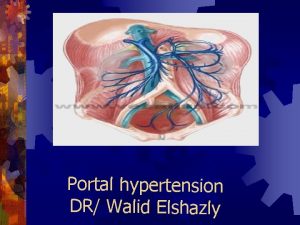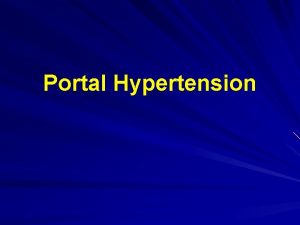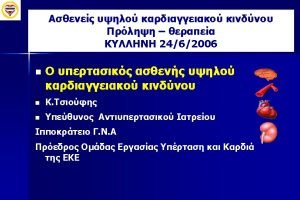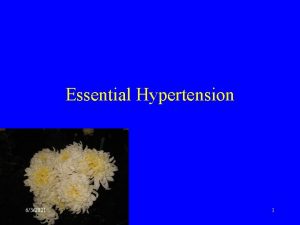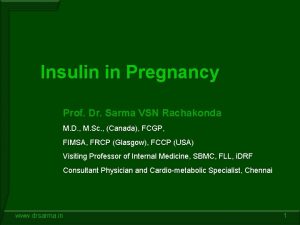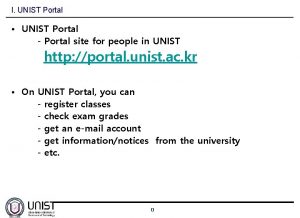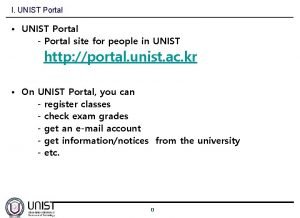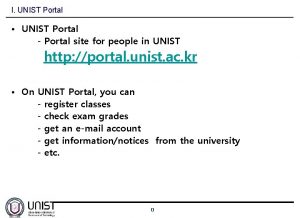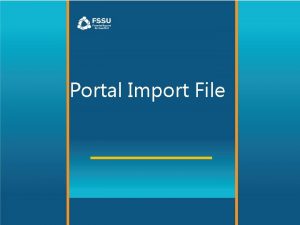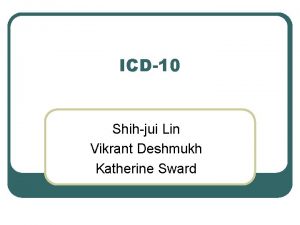Update in Portal Hypertension Vikrant Rachakonda MD CONFIRM

















- Slides: 17

Update in Portal Hypertension Vikrant Rachakonda, MD

CONFIRM: Terlipressin plus Albumin for the Treatment of Type 1 Hepatorenal Syndrome (LO 5) • Background • Type HRS 1: • SCr ≥ 2. 25 mg/dl • Doubline of SCr within 2 weeks • Lack of improvement (<20% decrease in SCr in 48 hrs after diuretic withdrawal and albumin challenge) • Associated with very poor transplant-free survival (20% at 1 month without RRT) • Aim: • To confirm efficacy and safety of terlipressin + albumin versus albumin alone in Type 1 HRS

METHODS • Double-blind prospective control trial • 300 patients randomized 2: 1 to terlipressin (1 mg IV every 6 hrs) + albumin (1 gm/kg/d x 2 days then 20 gm/d) versus albumin alone • Treatment duration: 14 days unless an endpoint occurred, or non-improvement of Cr by day 4 • Outcomes: • Verified HRS Reversal (VHRSR): 2 consecutive SCr ≤ 1. 5 mg/dl, with subjects alive and free of RRT for at least 10 days • HRSR: SCr ≤ 1. 5 mg/dl • RRT • LT

RESULTS

RESULTS • Serious Adverse Event Rates: • Terlipressin: 130/200 (65%) • Placebo: 60/99 (60. 6%) • Ischemia: • Terlipressin: 4. 5% • Placebo 0% • No new or unexpected AEs were reported

CONCLUSION • Terlipressin is effective in improving renal function and achieving HRS reversal in patients with HRS-1 and advanced liver disease.

Cystatin C Predicts Need for Hemodialysis, SLK, and Transplant-Free Survival in Liver Transplant Candidates: 0010 • Background: • Renal insufficiency is independently associated with reduced survival in end-stage liver disease • SCr is a poor surrogate of GFR in patients with cirrhosis and is confounded by: • • Gender Hepatic synthetic function Muscle mass Race • Cystatin C is a 13. 3 k. DA protein that is completely catabolized in the proximal renal tubule after filtration without return to blood • Aim: • To determine the efficacy of Cystatin C in assessing renal function, need for SLK, and mortality risk

METHODS • Two Center Prospective Cohort Study with 246 patients • Cys-C obtained at the time of liver transplant evaluation • Patients were prospectively followed to obtain data on clinical events: • • LT Need for RRT Need for SLK Transplant-free survival

RESULTS CHARACTERISTIC RESULT NOTES Liver Transplanted 161 (66%) Median time 6. 6 months (3 d-7 y) Deaths 40 (16%) Etiology HCV 89 (36%) ETOH 52 (21%) NAFL 49 (20%) Other 56 (23%) Male 157 (64%) White Race 194 (79%) Ascites 174 (71%)

RESULTS • ROC for 1 -year transplant-free survival: • MELD-Cys. C: AUROC 0. 81 (95% CI 0. 70 -0. 92) • MELD: AUROC 0. 78 (95% CI 0. 66 -0. 90) • Cys. C ROC for renal-related outcomes: • Pre-transplant HD: AUROC 0. 77 (0. 65 -0. 90) • SLK: AUROC 0. 89 (0. 77 -1. 00)

RESULTS

CONCLUSIONS • Cys C accurately predicts clinical outcomes in LT candidates including pre-LT HD, need for SLK and transplant-free survival

Rifaximin for the prevention of hepatic encephalopathy in patients treated with TIPS: a Multicentre RCT: 0014 • Background: • Hepatic encephalopathy (PSE) occurs in 30 -50% of patients undergoing TIPS placement • The role of rifaximin in primary prevention of PSE after TIPS placement is poorly understood • Aims: • To determine the efficacy of rifaximin for prevention of a first of PSE after TIPS placement

METHODS • Randomized, placebo-controlled trial including 186 patients • Treatment: • Rifaximin 600 mg PO BID • Placebo • Started 15 days before TIPS and for 6 months after procedure • Follow-up period of 1 year • Primary endpoint: absence of HE at 6 months

RESULTS • Mean Age: 59. 9 ± years • Gender: • 144 males • 44 females • TIPS Indications: • Recurrent Ascites: 86% • Prevention of Variceal Rebleeding: 16% • • • Etiology: 70% ETOH Mean MELD: 11. 9 ± 3. 9 Mean CTP: 8. 1 ± 1. 1 20% had pre-TIPS PSE Follow-up period: 310 days

RESULTS 6 Month probabililty of no PSE (p<0. 01): 66. 3% with RIF 45. 1% without RIF 6 Month Transplant-free Survival (p=0. 05): 93. 2% (88 -96%) with RIF 84% (76. 7 -92. 1%) RIF prevented PSE indepdently of CTP Class and pre-TIPS PSE

CONCLUSION • In patients treated with TIPS, preventive rifaximin is associated a lower risk of PSE and higher rate of transplant-free survival at 6 months after TIPS placement
 Dr sarma vsn rachakonda
Dr sarma vsn rachakonda Vikrant sahasrabuddhe
Vikrant sahasrabuddhe Recovery techniques based on immediate update
Recovery techniques based on immediate update Nursing management of portal hypertension
Nursing management of portal hypertension Dr douglas simonetto
Dr douglas simonetto Why does liver disease cause splenomegaly
Why does liver disease cause splenomegaly Stigmata of portal hypertension
Stigmata of portal hypertension Presinusoidal portal hypertension
Presinusoidal portal hypertension Symptoms of portal hypertension
Symptoms of portal hypertension Neonatal liver failure
Neonatal liver failure Compliance vs conformity
Compliance vs conformity Please confirm your attendance
Please confirm your attendance 002
002 How do you confirm appendicitis
How do you confirm appendicitis Confirm your email now and get 5 minutes as a gift!
Confirm your email now and get 5 minutes as a gift! Death confirmation geeky medics
Death confirmation geeky medics Confirm your identity facebook hack
Confirm your identity facebook hack Hypertensive emergency
Hypertensive emergency
